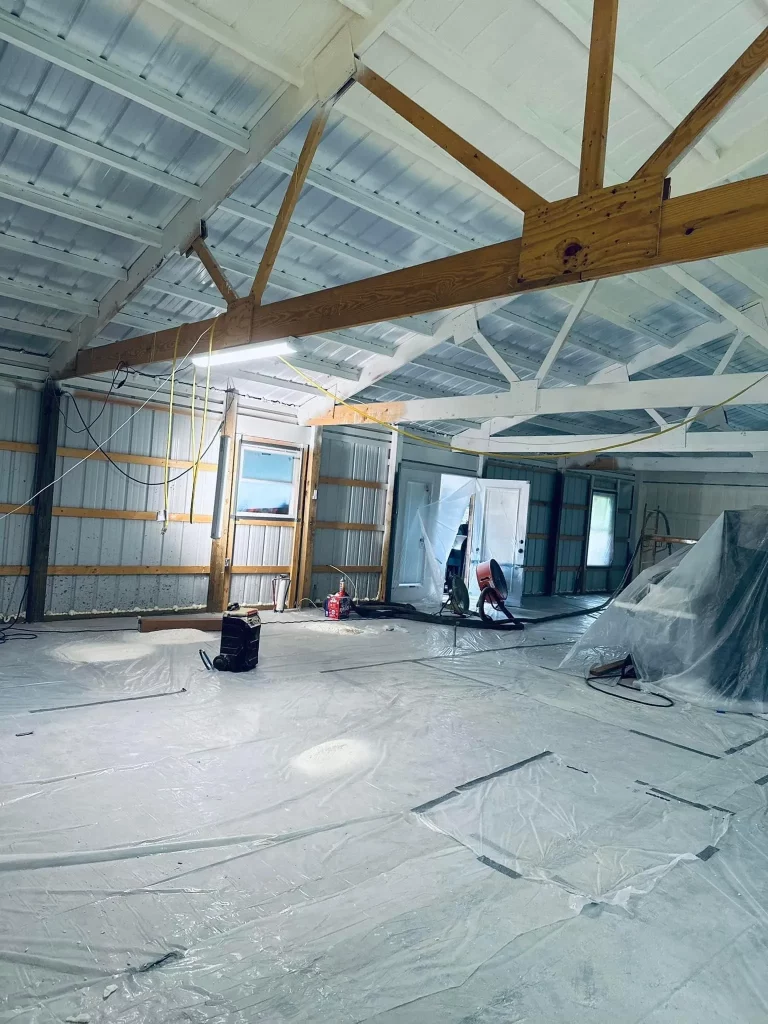
Air leaks in homes waste energy and drive up bills. Four clear signs point to this problem: uneven room temperatures, high energy costs, drafts near windows and doors, and excessive dust buildup. These issues signal gaps where conditioned air escapes, often from poor insulation. Addressing them early saves money and improves comfort.
This article breaks down each sign with practical checks and fixes. Drawing on our years of experience handling insulation in Arkansas homes, where humid summers and chilly winters amplify these problems, you’ll gain steps to spot leaks and understand why better insulation matters.
Rooms that stay too hot or cold compared to others show air leaking out. Warm air rises and escapes through attic gaps, while cold air seeps in from walls. In regions with temperature swings like Arkansas’s—from 90-degree summers to freezing nights—this unevenness hits hard.
Test it by setting your thermostat and walking through the house. If one bedroom feels stuffy while the living room chills you, leaks likely exist. Feel for temperature drops near outlets or baseboards.
A study from the U.S. Department of Energy notes that air leaks account for 25-40% of a home’s energy loss. This fact underscores how small gaps add up fast.
Close interior doors and monitor for changes. A quick rise in temperature variation confirms circulation issues from leaks.
Bills that climb without changes in usage often mean air escapes through cracks. Insulation stops this flow, keeping heat or cool air inside. Without it, heating and cooling systems run longer, burning more power.
Track monthly bills over a year. A steady increase, even with mild weather, points to inefficiency. In the South, where AC runs heavy in summer, leaks make costs soar.
Data from the Environmental Protection Agency shows average U.S. households spend $1,900 yearly on energy, with poor sealing adding hundreds. Arkansas homes face similar pressures from regional humidity.
Feel a breeze around frames? That’s air pushing through seals. Windows and doors often have the worst leaks because weather strips wear out.
Hold a lit incense stick near edges on a windy day. Smoke drifting inward reveals paths. Tape plastic over frames temporarily to test if drafts stop.
This sign appears most in older homes with settling foundations. In windy areas like the Arkansas plains, drafts worsen noise and pollen entry too.
Dust that gathers quickly inside suggests outside air carries it in through leaks. Poor seals let particles infiltrate vents and walls.
Similar to the draft detection techniques described earlier, check filters monthly; if they clog fast, air pulls from unintended spots. Vacuum registers and watch for quick re-accumulation.
The American Lung Association reports that sealing leaks cuts indoor pollutants by up to 50%, improving air quality.
Use a smoke pencil tool for precise leak detection around fixtures. It shows flow direction without mess.
| Method | Tools Needed | Ease of Use | Accuracy | Best For |
|---|---|---|---|---|
| Hand Test | None | High | Low | Quick checks around doors |
| Incense Smoke | Incense stick | Medium | Medium | Visualizing drafts near windows |
| Thermal Camera | Infrared camera | Low (requires equipment) | High | Professional scans of walls and attics |
| Blower Door Test | Professional service | Low | Very High | Full home assessment |
This table helps choose approaches based on effort and detail needed.
Assess home age first. Newer builds often have better seals, but settling creates gaps over time. Older houses in Arkansas, built pre-1980, typically need more attention due to outdated materials.
Check local climate impact. High humidity here means moisture enters leaks, risking mold. Review energy audits from past years for baseline data.
Factor in budget and DIY limits. Simple caulk fixes cost little, but major insulation demands pros. Weigh long-term savings against upfront work.
Map your home’s layout to prioritize high-traffic areas like kitchens, where leaks affect daily life most.

Inspect twice yearly, before heating and cooling seasons. Arkansas weather shifts make seasonal reviews key.
Yes, drafts near windows yellow leaves on houseplants. Position them as natural detectors.
Focus on sealing first, then add fiberglass or spray foam for retention.
Spot these four signs early to avoid bigger issues. Uneven temperatures, rising bills, drafts, and dust all demand action. Evaluate your home’s setup against local weather patterns for targeted fixes. Consider your budget and goals to choose the right steps forward.
Homeowners facing these signs benefit from expert advice. LMC Insulation offers insights on sealing and insulation tailored to Arkansas conditions. Reach out via email at [email protected] or call (479) 351-6175 to discuss your situation. Start with a simple assessment to pinpoint needs and plan efficient improvements.
For more specific concerns, here are detailed answers to questions many Arkansas homeowners have.
Look for frost on rafters in winter or hot spots in summer. Use a flashlight to spot light through cracks from below. A professional blower door test measures total leakage rate.
Apply weatherstripping or foam tape. These seal gaps without tools. Replace old caulk around frames for lasting results.
Yes, by preventing moist outside air entry. In humid areas like Arkansas, combine with dehumidifiers for best control.
Expect 10-20% reduction, per energy audits. Results vary by home size and leak severity.
Basic sealing is, but attic work risks falls. Hire experts for electrical or structural checks.